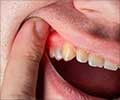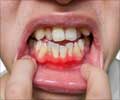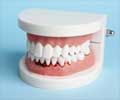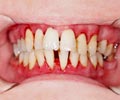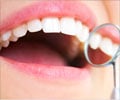- Gingival recession - (https://en.wikipedia.org/wiki/gingival_recession)
- Gum recession treatment and gum contouring - (http://www.perioimplants.co.uk/gum-treatments/gum-recession-contouring)
- Periodontitis - (http://www.mayoclinic.org/diseases-conditions/periodontitis/basics/tests-diagnosis/con-20021679)
- Gum disease - (http://www.nhs.uk/conditions/gum-disease/pages/introduction.aspx)
- PERIODONTAL POCKET REDUCTION PROCEDURES - (https://www.perio.org/consumer/pocket-reduction-procedures.htm)
- Gum Recession Treatment Options - (http://www.implantdocs.us/gum-recession/gum-recession-treatment-options.aspx)
What is Gum Recession / Gingival Recession?
Gum recession is a gum disease (periodontal disease) in which the root of the tooth is exposed due to migration of the gum margin below the cementoenamel junction (CEJ). The CEJ is the junction of the tooth with its root. The gum fibers holding the tooth and bone becomes weak and separates. This exposes the root.
"Gum Recession" or gingival recession may affect a single tooth or multiple teeth. Receding gums can result in tooth sensitivity, but this is not always the case.
People commonly notice receding gums in adults, particularly those over 40 years old. In some instances, teenagers or children can also experience it.
What are the Causes of Gum Recession / Gingival Recession?
The causes of gingival recession are as follows:
- Brushing or flossing the teeth very hard or for a long time.
- Gum disease (Periodontal disease)
- Improper flossing, which may injure the gums
- Hereditary factors
- Thin gum (biotype)
- Scurvy (Deficiency of vitamin C)
- Acute Necrotizing Ulcerative Gingivitis (ANUG)
- Use of teeth braces in adults
- Use of dipping tobacco
- Cigarette smoking

- Gutkha chewing
- Poor oral hygiene
- Abnormal tooth positioning like crooked teeth or misaligned bite
- Bruxism (Grinding of teeth), which can worsen any pre-existing gum disease
- Lips and tongue piercings which can damage the gums by rubbing against them
- Self-induced trauma such as putting a pencil or fingernail into the gums. This habit is mainly observed among children or people with psychiatric problems
- Poor fitting of Dental Appliance can cause traumatic injuries. Some common appliances are removable partial dentures, crowns, or bridgework, can cause
What are the Symptoms of Gum Recession / Gingival Recession?
Gum recession is a progressive condition that worsens gradually over the years. As it is a slow process, gingival recession can go unnoticed for many years. After a prolonged process symptoms get worse and cause discomfort.
The signs and symptoms of gum disease are:
- Exposed root surfaces
- Loose teeth
- Bleeding gums
- Inflamed gums
- Longer tooth line
- Tooth sensitivity
- Cavities below the gum line
- Spaces between the teeth seem to be more due to lack of gums
- Difference in tooth color (due to exposure of the root which has a different color as compared to the enamel)
- Bad breath
How Do You Diagnose Gum Recession / Gingival Recession?
A periodontist, dentist, or dental hygienist diagnoses gingival recession during a periodontal examination. You should always include this type of dental examination as part of your regular dental check-up.
During the examination, they use a periodontal probe to measure the depth of the sulcus. The sulcus is the space between the tooth and the gums. A healthy sulcus normally measures three millimeters or less and does not bleed.
In some cases, the dentist may require x-rays to assess the condition of the tooth and the jawbone. They also examine tooth sensitivity near the gum line, which can be indicative of receding gums.
Your dental doctor will check the sulcus depth, bleeding, inflammation and mobility of tooth. Based on findings they conclude any gum disease such as gingivitis, periodontitis or advanced periodontitis. In the presence of a periodontal disease, the pockets are usually deeper than normal.
How Do You Treat Gum Recession / Gingival Recession?
The aim of a periodontal treatment is to completely clean the pockets surrounding the teeth. They also make sure to prevent damage to the surrounding jawbone. A dentist, a dental hygienist or a periodontist performs this treatment. It is also important on your part to maintain good oral hygiene for a successful treatment outcome.
There are two types of treatments involved, which include non-surgical treatment and the surgical treatment.
Non-Surgical Treatment Methods
These procedures correct gum disease in its initial stages.
- Scaling and Root Planing– Scaling is a non-surgical periodontal therapy, which removes dental plaque and calculus from tooth surfaces. In the Root Planing Procedure, we smooth the root surfaces.
- Antibiotics – Your dentist may suggest topical or oral antibiotics to treat the existing bacterial infection. Dentists use topical antibiotic gels between the tooth and gums.
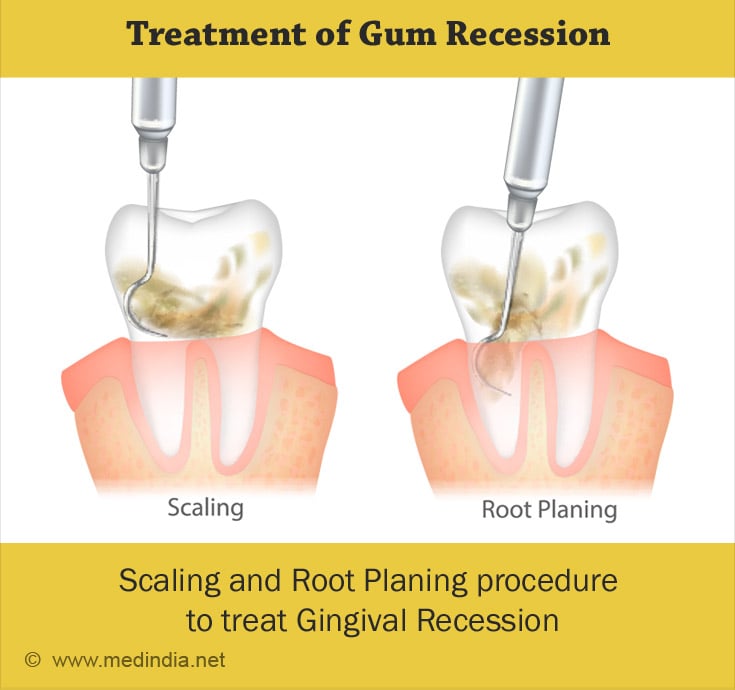
- Surgical Treatments – The surgical treatments include:-
- Flap Surgery (Gingivectomy, Pocket Reduction Surgery, Osseous Surgery) – In this procedure, your dentist makes small incisions in the gum tissue and pulls it back to clean the root surface. In a few cases, we smooth the underlying damaged bone to prevent bacterial accumulation. Once we complete the cleaning process, we suture the gum tissue back into its place.
- Soft Tissue Grafts – A bit of tissue is added to the affected area. This replaces the lost gum tissue from periodontal disease. The dentist takes the tissue from your palate or any other donor source. This procedure restores the exposed roots and gives your teeth an attractive appearance.
- Bone Grafting – In this surgery, the dental surgeon performs the procedure when periodontitis causes the loss of your jawbone. The graft comprises small fragments of your bone, a donated bone, or a synthetic bone. The bone graft procedure aids in preserving your tooth by securing it in position.
- Tissue Regeneration – Tissue regeneration induces regrowth of bone or tissue that the periodontal disease had harmed. After cleaning, the doctor will keep a regenerative material in the periodontal pocket. This stimulates re-growth of tissue or bone in that particular area.
- Pinhole Surgical Technique (PST) – It is a scalpel-free, suture-free procedure for treating receding gums. This method was invented by Dr. John Chao. It is performed by incising a small opening with a needle in the gum tissue. Using special dental instruments, the dentist operates through this opening to bring the underlying tissue over the receded part of the tooth and thereby restore the gum line to a normal level.
Health tips
- Follow proper brushing and flossing techniques
- Avoid tobacco
- Go for regular dental check-ups
- Use a soft toothbrush
- Eat a balanced diet
- Avoid putting foreign objects in your mouth that can cause gum recession
- Maintain good oral hygiene


